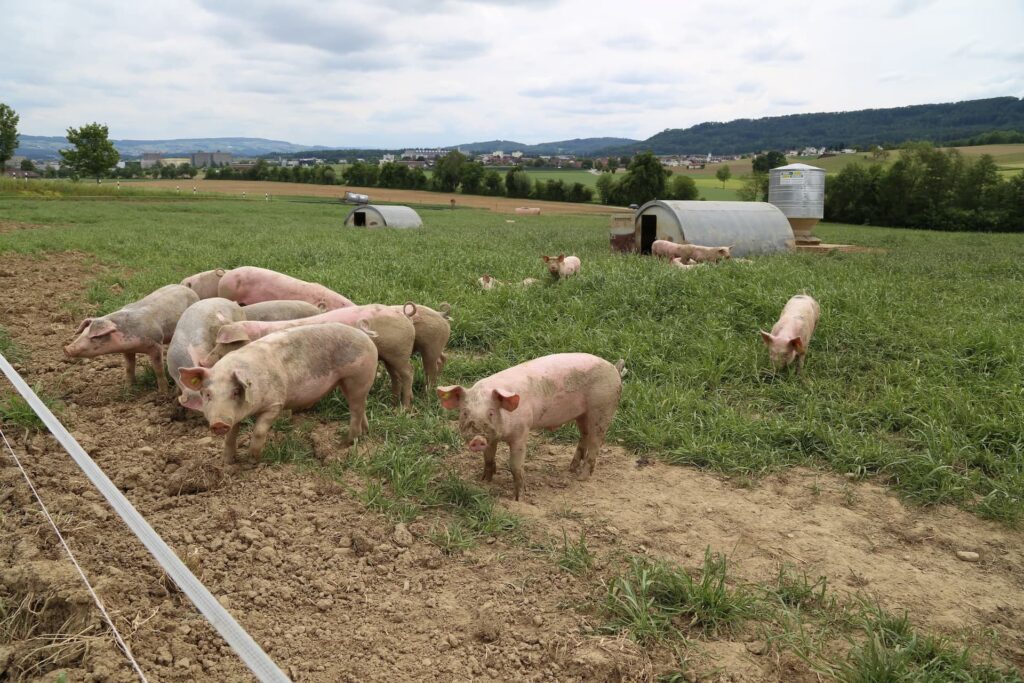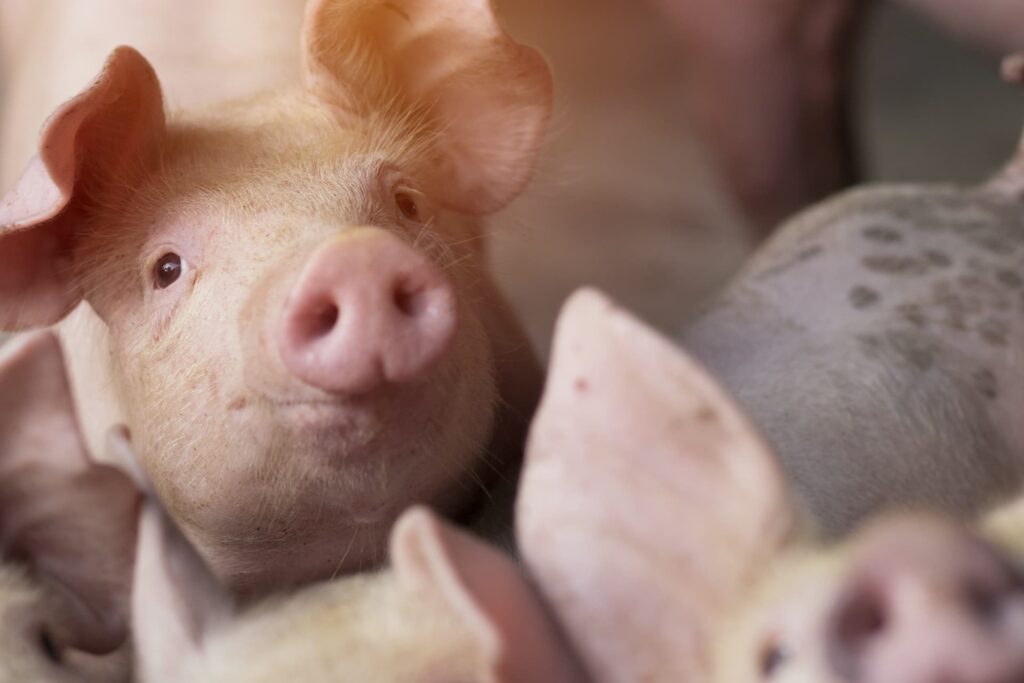Pigs
The Swiss Edelschwein is the most widespread pig breed in the country’s agricultural sector. It is descended from old local breeds that were “refined” with Yorkshire pigs. Its appearance is characterised by its prick ears. In contrast, the Swiss Landrace has hanging ears. It is the second most important breed in Swiss pig fattening. Primera is the name given to the cross between the Landrace and Edelschwein. Albeit kept more rarely, other breeds in Switzerland include the Duroc, Piétrain, Turopolje and Mangalica.

Domesticated a long time ago
Man domesticated pigs around 10,000 years ago. For a long time in Europe, the pigs were kept in the forest where they fed themselves and ate acorns, among other things. At the end of the 18th century, the farming of pigs moved to sties where they were fed food waste. Thanks to breeding and targeted feeding, pigs today gain weight much faster than they did in the past. During the 19th century, a 2-year-old pig would weigh around 50 kilograms. Today, pigs already reach a weight of approximately 100 kilograms after just six months.
Pigs eat everything
Pigs are omnivores. They therefore eat many by-products from food production. Whey from cheese production and vegetable waste, for example, are found on the menu. Pig farming thus helps to prevent food waste. Farmers also feed the pigs with feed mixtures comprising cereals, maize, canola and soya meal, mill by-products and minerals.

The breeding pyramid
Pig production in Switzerland is highly specialised. Special breeding farms keep gilts for breeding and boars for artificial insemination. There are then also farms that keep sows and produce fattening piglets. The fattening farms subsequently fatten the piglets until they reach slaughter weight.

